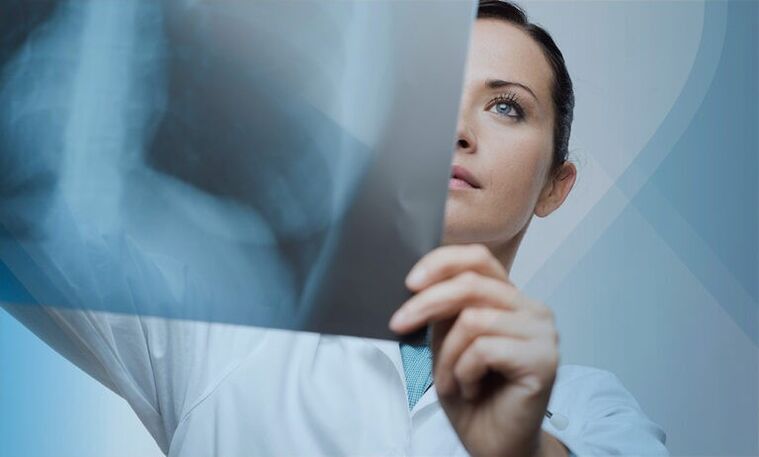Not only people of retirement age are currently susceptible to this disease, young people over the age of 25 are also part of the risk group. Osteochondrosis affects different areas and departments: the lower back, neck, chest.

Causes and stages of cervical osteochondrosis
Osteochondrosis occurs due to the influence of such factors:
- excessive physical stress on the spine;
- bending over, injuries of the intervertebral discs;
- nervous tension, stressful situations;
- insufficient receipt of the necessary vitamins, minerals and trace elements, which slows down metabolism and leads to the formation of osteochondrosis;
- sedentary lifestyle;
- the presence of flat feet;
- sleeping on a soft pillow or mattress;
- frequent uncomfortable postures when sitting;
- carrying the bag on one side;
- circulatory disorders and muscle cramps.

All causes in combination or individually create favorable conditions for the development of osteochondrosis. Women are more prone to this disease, and wearing high heels and a bag on one shoulder aggravates the situation, pregnancy is no exception. Failure to comply with the rules recommended by the attending physician exposes the health of the mother to serious harm.
Strain on the cervical spine can result in cartilage tears, slipped discs and pinched nerves and spinal cord. Along the cervical region are vessels that supply the brain with the necessary substances, the squeezing of which leads to serious health problems. If you do not treat osteochondrosis of the cervical spine at home, the person's condition worsens, the distance between the vertebrae narrows, then the bone tissue grows, causing severe pain and discomfort. There are several stages of cervical osteochondrosis:
- The first stage is characterized by the appearance of cracks in the fibrous ring, possibly due to the displacement of the nucleus to the side. Symptoms are sharp and stabbing pains, sudden muscle spasms, the patient may have dilated pupils and numbness of the tongue - this is an indicator of the initial stage of nerve injury. Specialists often additionally diagnose Wright's and Naffziger's syndromes, the characteristic features of which are numbness of the hand when lifting it, tingling, pinching of nerve endings in the collarbone area. Neck pain that does not go away on its own and often occurs with physical exertion, a characteristic crunch in the affected areas, underlying fatigue, tinnitus.
- In the second stage, the gap between the vertebrae narrows even more, this leads to drying of the fibrous ring, the rupture of the capsule is also accompanied by an inflammatory process. Without proper treatment, osteophytes appear - growths of bone tissue.
- The third stage is characterized by a complete rupture of the cartilaginous tissue, a nuclear prolapse can occur, provoking the formation of a herniated disc. Symptoms that help to identify the disease at stage 3 are often acute pain in the neck, frequent numbness of the limbs, a person cannot control his arm or leg, this is accompanied by dizziness and headaches, loss of consciousness.
diagnosis and treatment of the disease

If you suspect cervical osteochondrosis, you cannot self-medicate. The symptoms of some diseases are very similar to each other, and self-medication can lead to a worsening of the condition and a wheelchair.
The disease is always easier to get rid of at the initial stages of development, when it has not gained strength and has caused little damage to internal organs.
With a long treatment, which consists of taking medication, physical therapy exercises and following the daily routine, there is a risk of losing valuable time.
When symptoms of the disease are detected, it is necessary to contact a specialist - a neuropathologist who will be able to diagnose damage to the nerve endings, determine and prescribe additional x-rays, ultrasound of the vessels and tomography. Diagnosis is based on MRI and radiography.
In the initial stages of the disease, the patient can treat cervical osteochondrosis at home, visiting a specialist at a certain time and fully adhering to his advice and prescriptions.
Drug treatment consists in taking certain drugs that the doctor must prescribe depending on the stage of the disease and the general condition of the body, indicating the dosage:
- NSAIDs, reception lasts up to 2 weeks;
- Sedatives avoid complete exhaustion of the nervous system, among which are feverfew tincture, valerian;
- if edema appears, the doctor prescribes diuretics that reduce swelling of the inflamed area;
- Thanks to taking B vitamins, metabolic processes in the affected tissues of the nervous system are normalized, neuromuscular conduction improves;
- Muscle relaxants relax muscles that are prone to spasms;
- taking chondroprotective drugs to improve the functioning of intervertebral discs and cartilage tissues;
- in addition, the specialist prescribes ointments and creams, they relieve pain, warm the tissues and help to relieve the human condition.
If the patient feels unwell, bed rest is mandatory. Correct posture relaxes the intervertebral discs and the pain subsides. Bed rest lasts no more than 2 days, then the patient must necessarily move.
Tips to alleviate the human condition
Doctors often hear the question of how to treat cervical osteochondrosis at home. If the patient is in the acute stage of the disease, he is recommended to do light breathing exercises and several exercises to relieve spasms.
With the improvement of well-being, it is allowed to perform sets of exercises in a seated or standing position under the supervision of an experienced specialist. When a person has learned all the necessary rules and strictly adheres to them, he is allowed to do therapeutic exercises at home.
It consists of several gentle turns and tilts of the head, and then the load is gradually increased. If a muscle spasm suddenly occurs, a light massage that does not cause pain and discomfort is necessary.
In good health for prevention, experts recommend visiting an experienced masseur 2 times a year. It is able not only to properly and quickly warm up the muscles, but also to qualitatively remove small salt deposits and develop joints and vertebrae.
After consultation with the doctor, it is allowed to use the Glisson loop, which consists of several straps suspended on a hook. They allow you to support your head and relieve neck strain. Diet plays a huge role in the treatment of cervical osteochondrosis. Experts advise excluding from daily consumption products that increase muscle tone and can cause spasms - coffee, tea, alcoholic and low-alcoholic beverages, smoked products and spices. A person with osteochondrosis benefits from:

- high-fiber, phytochemicals and antioxidants not only improve the general condition of the patient, but also have a positive effect on the vertebrae and cartilage tissue: these are fresh fruits and vegetables, legumes in any form, cereals;
- protein-containing products - milk and its derivatives, all kinds of nuts, eggs, dietary and lean varieties of meat and fish, beef;
- Products with unsaturated fatty acids - fatty varieties of sea fish, flaxseed, lightly fried and dried;
- Products with a high content of calcium in the composition - sour milk products, mineral water.
If a person is not in the acute stage, it is still better not to take risks and not to re-spasm the affected tissues with improper nutrition. You need to drink a sufficient amount of still non-carbonated water, balance your diet, do daily exercises from therapeutic exercises that will not only weaken and strain the affected areas of the body, but also strengthen the patient's body .
At work, you need to rest at short intervals, do a quick self-massage, and take care of the correct posture.
The danger of self-medication

In order not to put yourself at great risk, you do not need to self-medicate. Only an experienced specialist can understand the disease, find out the stage of osteochondrosis, take measures to eliminate the disease and prescribe the correct and qualified treatment. Some diseases are quite insidious and can easily disguise themselves as others.
Examination with X-ray, ultrasound and magnetic resonance imaging will help to check the structure of the intervertebral discs, identify problems and find the right option to eliminate them and alleviate the patient's condition. If a person self-medicates, he may miss the initial stage of the disease and expose his body to even more destruction. The uncontrolled intake of medication damages not only the gastrointestinal tract, but also the liver and kidneys, which removes toxins and increases the purification of the blood.
After consulting the doctor at home, you can use decoctions of medicinal herbs and plants yourself, which enhance the effect of ointments and preparations:
- Celery: 1 tsp crushed root of this plant is poured into 1 liter of warm water and leave for 8 hours, after straining take 1 tsp. 3 times a day after meals. Celery seeds: 1 tbsp. l. Pour 0. 5 liters of boiling water, insist for 2 hours and take 1 tbsp. l. 3 times a day before meals.
- Fresh horseradish or cabbage leaves, pre-crumpled, are applied to sore spots, tied over them with a warm scarf or shawl and changed as needed.
Recommendations of specialists for the prevention of osteochondrosis
The most common mistake many patients make is the persistent belief that the disease will go away on its own.
Doctors say that such an attitude to health adversely affects a person's condition and aggravates the course of cervical osteochondrosis.
The course of treatment consists not only in the elimination of pain, discomfort and some symptoms, but also in the restoration of damaged intervertebral discs and cervical vertebrae, in the elimination of contusion of the arteries leading to the brain, and in maintaining a person's well-being.
The recovery process is quite long and requires a lot of perseverance, effort and help from relatives and friends, but the result will allow you to feel free, not dependent on medication and enjoy life.

























